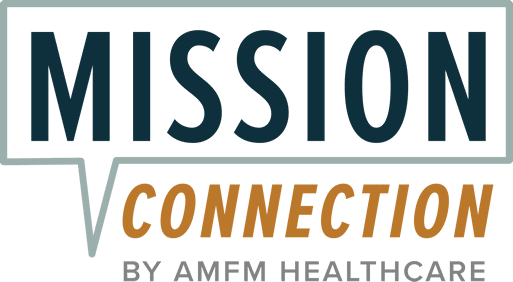Trauma-Related Emotional Flashbacks in Adults: What They Are and How to Cope

We’ve come a long way in understanding PTSD, and most people now recognize symptoms like flashbacks as part of the condition. Many know that visual flashbacks can feel terrifying, pulling a person right back into the fear of the original trauma. But what’s often less commonly understood are emotional flashbacks.
Emotional flashbacks can be just as intense as visual ones, and sometimes even harder to identify, especially when the person experiencing them doesn’t realize what’s happening. This is why learning to recognize when an emotional flashback is taking place, and knowing that help is available, can make all the difference in how someone begins to recover.
If the emotional flashbacks PTSD creates are impacting your life, a mental health professional can provide support and guidance. This page can also help you better understand triggers and emotional overwhelm by exploring:
- What trauma-related flashbacks are
- The symptoms of emotional flashbacks
- The causes of emotional flashbacks
- The common triggers of emotional flashbacks
- Treating emotional flashbacks
- How Mission Connection helps treat emotional flashbacks

What Are Trauma-Related Emotional Flashbacks?
Trauma-related emotional flashbacks are when a person is essentially “transported” into the emotional state they felt during a traumatic event. This may happen even if they have no clear recollection of the event at that moment.1
These episodes can be deeply confusing, as a person may respond to the present with emotions from the past. They may also do so without realizing they’re reliving old pain instead of reacting to what’s actually happening.1
It’s important to tell an emotional flashback apart from a classic PTSD visual flashback. In visual flashbacks, intrusive memories like images from the trauma create the feeling of actually being back in that moment.
In contrast, emotional flashbacks are when survivors frequently re-experience the emotional pain of their past, rather than concrete flashback images.2 They’re especially common in complex PTSD.
What Are the Symptoms of an Emotional Flashback?
When you hear the definition of an emotional flashback, it may be logical to think that the symptoms a person experiences would solely be emotional, but this isn’t the case.
Aside from a person feeling all the emotions they felt during their traumatic event, like intense fear or panic, these types of flashbacks have been known to trigger the fight or flight mechanism in the nervous system.3 This is because the person’s body may respond as if actual danger is present. For example, they might experience a racing heart, rapid breathing, sweating, trembling, or dizziness as the flashback hits.4
As a result of this, some have described a sense of panic or impending doom, even to the point of feeling they are in life-threatening danger. This is because their body is reliving the fear imprinted by the trauma.3
It is also common to detach from reality during severe flashbacks. For instance, survivors may report that they feel as if they are in a “haze,” which is the mind’s way of escaping an unbearable situation.5
Sadly, the aftereffects of an emotional flashback can linger for some time after the emotional flashback has taken place. In fact, some sources suggest it can take hours for the emotional intensity to fully subside.6 This can leave the person emotionally raw or shaky for some time before they start to calm down.
What Causes an Emotional Flashback?
Emotional flashbacks occur due to the way traumatic experiences are stored and handled by the brain and psyche. In normal circumstances, memories, even bad ones, are processed and integrated over a period of time. Traumatic memories, however, can get “stuck” in a raw, non-verbal form, complete with the original terror or pain.7
This may be because neuroscience has shown that PTSD flashbacks are linked to the brain’s “fear center” (the amygdala) going into overdrive. They might also connect to how the trauma memory may not be properly integrated into time perception.8
Essentially, the entire traumatic memory is stored in a fragmented way, kind of like corrupted data on a memory stick. So when a reminder triggers it, the person can feel as if the trauma is happening right at that moment. Emotional flashbacks then occur because the emotional fragment of the memory resurfaces.
What Are the Common Triggers of Emotional Flashbacks?
Emotional flashbacks can be set off by a wide range of triggers, which are internal or external cues that in some way resemble the original trauma. For example, for someone who’s been in a traumatic car crash, the smell of gasoline that may have been present in that moment could become a trigger in later situations. But these triggers aren’t always obvious and could be something subconsciously stored in the person’s mind that acts as an emotional flashback trigger.
Below, we explore some of the most common triggers for an emotional flashback:
Sensory Reminders
Specific sights, sounds, sensations, or smells can provoke an emotional flashback if they are linked to the trauma memory.
For example, hearing a loud, angry voice or witnessing an aggressive argument might trigger someone who grew up with domestic violence, as it immediately brings back the fear they felt.
These sensory triggers often function like landmines. The person might not even realize that a certain sensation is present and sends them into panic or despair, but it’s because it subconsciously reminds them of the trauma.
Interpersonal Stress
Situations in which someone feels criticized or attacked could be a big trigger for emotional flashbacks, especially for those who experienced the effects of childhood trauma.9
Moments like having your opinions dismissed or being spoken to harshly can resurface the negative emotions you may have experienced during the traumatic event.9
An example might be that when conflict arises, like a partner’s anger or a colleague’s sharp tone, it can suddenly feel as though you’re in danger again. This can lead to distress that feels far bigger than the moment itself.9
Feeling Trapped
Although there isn’t solid research into this particular trigger, it is theorized to be one, especially if childhood experiences are the source of someone’s trauma.
For example, situations that make you feel trapped or unheard can bring back the same helplessness that existed during the original childhood trauma. Further, feeling like you have no say in something, or even being in an enclosed space, might echo moments from the past when escape wasn’t emotionally possible.
Sudden confrontations or unexpected news may have a similar effect, stirring feelings of fear or unease that don’t quite match the situation. Basically, any experience that symbolically mirrors past powerlessness could become a trigger.
All of the triggers mentioned are deeply personal and are shaped by each person’s history, but what connects them is how they subtly resemble the original experience. Learning to recognize these connections, both shared and unique, is a meaningful part of understanding and managing emotional flashbacks.
How Are Emotional Flashbacks Treated?
Trauma can be a very difficult subject to unpack, especially with the potential of so many different trauma symptoms that can present themselves. But just because it’s complex, it doesn’t mean there aren’t any effective treatments available.
Dealing with emotional flashbacks usually requires a two-pronged approach: professional therapy and the development of self-help coping strategies.
First, we’ll begin with the professional therapy side of things, to give you an idea of the types of techniques therapists aim to teach you.
Professional Therapies for Emotional Flashbacks
The following are some approaches that are evidence-based in their efficacy in treating trauma.
Trauma-focused CBT
In TF-CBT, the therapist works with you to gently face and process traumatic memories along with the thought processes attached to them. This approach uses techniques such as exposure therapy, which helps you revisit trauma reminders in a safe way. It also employs cognitive restructuring, which focuses on reshaping negative thoughts connected to the experience.10
In fact, a meta-analysis concluded that trauma-focused CBT produces large improvements in PTSD symptoms and has outcomes equivalent to or better than other therapies.11
Eye Movement Desensitization and Reprocessing
EMDR is a trauma-focused therapy that helps people process painful memories using bilateral stimulation, such as guided eye movements. During a session, you’ll recall emotions or beliefs connected to the trauma while following a moving light or the therapist’s finger from side to side.12
This dual focus is thought to help the brain “unstick” the trauma and process it in a more adaptive way.13 If the emotional intensity begins to ease, the therapist supports you in replacing painful beliefs like shame or self-blame with thoughts that feel more grounded and self-accepting.
A major benefit of EMDR is that you don’t have to describe your trauma in full detail each time, which can make the process feel safer and more approachable.
Self-Coping Techniques for Treating Emotional Flashbacks
While the following coping techniques don’t replace professional support, they can complement it in meaningful ways.
Grounding Techniques
Grounding techniques help you reconnect with the present moment by engaging your senses and noticing your surroundings. In trauma recovery, they’re used to pull you out of flashbacks or dissociation and bring you back to a sense of safety.14
One useful grounding tool is the 5-4-3-2-1 sensory method, which requires you to identify:15
Five things you can see, four things you can touch, three things you can hear, two things you can smell, and one thing you can taste.
Actively naming these sensory details out loud can help to redirect your focus to what’s happening in the present. So it pulls your attention away from any distressing thoughts you may be experiencing.
Another approach is to notice and name your surroundings, as describing where you are can shift your focus outward and help you feel more grounded.16
Even something as simple as describing your location (“I’m in my living room, I see a blue couch”) can be enough to shift your attention away from the internal distress.
Breathing Exercises
Breathing exercises are used in all sorts of situations where relaxation is needed and can be slow, fast, repetitive, or intentional breaths that help calm the body’s stress response. This usually means breathing deeply into the diaphragm and focusing on longer exhales to steady the nervous system.
Research on mind-body practices suggests that controlled breathing boosts parasympathetic activity, the part of the nervous system responsible for relaxation.17
A common method is the 4-7-8 technique, where you breathe in through your nose for a count of four, hold for seven, and exhale through your mouth for eight.18 The extended exhale is what activates the body’s natural calming response, helping your heart rate slow and your body settle.
Self-Soothing Strategies
Self-soothing techniques are exactly what they sound like: ways to comfort yourself when distress hits. This might involve gentle touch, such as stroking your arms, or engaging in sensory activities that help you feel secure. The aim is to intentionally create a sense of warmth and safety that can ease the fear or pain brought on by an emotional flashback.19
Some people find comfort in wrapping themselves in a soft blanket, listening to their favorite calming music, taking a warm bath, or gently stroking their own face.
Each of these coping techniques can be subjective, with different techniques working for different people; the key is finding one that works best for you.
Mission Connection: Trauma Therapy and Healing for PTSD and Emotional Flashbacks
Living with trauma can make every day feel unpredictable; one moment you’re fine, and the next, a sound or memory pulls you right back into fear or panic. These moments can be overwhelming, but with the right trauma-informed support, healing is possible.
At Mission Connection, we create personalized trauma healing treatment plans for adults who are coping with PTSD, trauma triggers, and emotional flashbacks. Our outpatient facilities include intensive outpatient (IOP) and partial hospitalization (PHP) programs, giving you the flexibility to heal at your own pace while still receiving structured, professional care.
Therapy is at the centre of everything we do, and by using CBT, EMDR, and trauma-focused therapies, our licensed clinicians help you understand how trauma affects your body and mind. Once the understanding is there, they’ll guide you toward safer and calmer emotional responses.
If attending in person feels daunting, our telehealth trauma therapy options allow you to begin wherever you feel most comfortable.
Reach out to Mission Connection today to learn how our mental health support for trauma survivors can help you move from surviving to healing.

References
- Moore, M. (2020, May 17). What Are Emotional Flashbacks? Plus Coping Methods. Psych Central. https://psychcentral.com/ptsd/understanding-and-coping-with-emotional-flashbacks
- Khatri, M. (2023, May 12). What to Know About Complex PTSD and Its Symptoms. WebMD. https://www.webmd.com/mental-health/what-to-know-complex-ptsd-symptoms
- Walker, P. (n.d.). Emotional Flashbacks Complex PTSD Article. Www.psychotherapy.net. https://www.psychotherapy.net/article/complex-ptsd
- Cherry, K. (2024, June 17). How the Fight or Flight Response Works. Verywell Mind. https://www.verywellmind.com/what-is-the-fight-or-flight-response-2795194
- Davies, S. (2019, July 1). The Living Hell of Emotional Flashbacks | CPTSDfoundation.org. CPTSD Foundation. https://cptsdfoundation.org/2019/07/01/the-living-hell-of-emotional-flashbacks/
- SAMHSA. (2014). Understanding the Impact of Trauma. National Library of Medicine; Substance Abuse and Mental Health Services Administration (US). https://www.ncbi.nlm.nih.gov/books/NBK207191/
- PTSD UK. (2025). Understanding PTSD Flashbacks and Triggers – PTSD UK. Ptsduk.org. https://www.ptsduk.org/what-is-ptsd/understanding-ptsd-flashbacks-and-triggers/
- Bourne, C., Mackay, C. E., & Holmes, E. A. (2012). The neural basis of flashback formation: the impact of viewing trauma. Psychological Medicine, 43(7), 1521–1532. https://doi.org/10.1017/s0033291712002358
- Bennett, C. (2023, March 2). CPTSD in the Workplace: Emotional Safety. CPTSD Foundation. https://cptsdfoundation.org/2023/03/02/cptsd-in-the-workplace-emotional-safety/
- Mayo Clinic. (2024). Post-traumatic stress disorder (PTSD) – diagnosis and treatment. Mayo Clinic. https://www.mayoclinic.org/diseases-conditions/post-traumatic-stress-disorder/diagnosis-treatment/drc-20355973
- Bisson, J. I., Ehlers, A., Matthews, R., Pilling, S., Richards, D., & Turner, S. (2007). Psychological treatments for chronic post-traumatic stress disorder. British Journal of Psychiatry, 190(2), 97–104. https://doi.org/10.1192/bjp.bp.106.021402
- USVM. (2024, March 1). EMDR, The Proven Trauma Therapy. U.S. Veterans Magazine. https://usveteransmagazine.com/usvm/emdr-the-proven-trauma-therapy-with-the-power-to-heal/
- Chen, Y.-R., Hung, K.-W., Tsai, J.-C., Chu, H., Chung, M.-H., Chen, S.-R., Liao, Y.-M., Ou, K.-L., Chang, Y.-C., & Chou, K.-R. (2014). Efficacy of Eye-Movement Desensitization and Reprocessing for Patients with Posttraumatic-Stress Disorder: A Meta-Analysis of Randomized Controlled Trials. PLoS ONE, 9(8), e103676. https://doi.org/10.1371/journal.pone.0103676
- Tull, M. (2021). What Grounding Techniques Can You Use for PTSD? Verywell Mind. https://www.verywellmind.com/grounding-techniques-for-ptsd-2797300
- Toussaint, L., Nguyen, Q. A., Roettger, C., Dixon, K., Offenbächer, M., Kohls, N., Hirsch, J., & Sirois, F. (2021). Effectiveness of Progressive Muscle Relaxation, Deep Breathing, and Guided Imagery in Promoting Psychological and Physiological States of Relaxation. Evidence-Based Complementary and Alternative Medicine, 1, 1–8. https://doi.org/10.1155/2021/5924040
- Center for Substance Abuse Treatment (US). (2014). Exhibit 1.4-1, Grounding Techniques. Www.ncbi.nlm.nih.gov. https://www.ncbi.nlm.nih.gov/books/NBK207188/box/part1_ch4.box5/?report=objectonly
- Russo, M. A., Santarelli, D. M., & O’Rourke, D. (2017). The physiological effects of slow breathing in the healthy human. Breathe, 13(4), 298–309. https://doi.org/10.1183/20734735.009817
- Aktaş, G. K., & İlgin, V. E. (2022). The Effect of Deep Breathing Exercise and 4–7-8 Breathing Techniques Applied to Patients After Bariatric Surgery on Anxiety and Quality of Life. Obesity Surgery, 33(3). https://doi.org/10.1007/s11695-022-06405-1
- PTSD UK. (2025). Self-soothing for people with PTSD and C-PTSD. Ptsduk.org. https://www.ptsduk.org/self-soothing/






